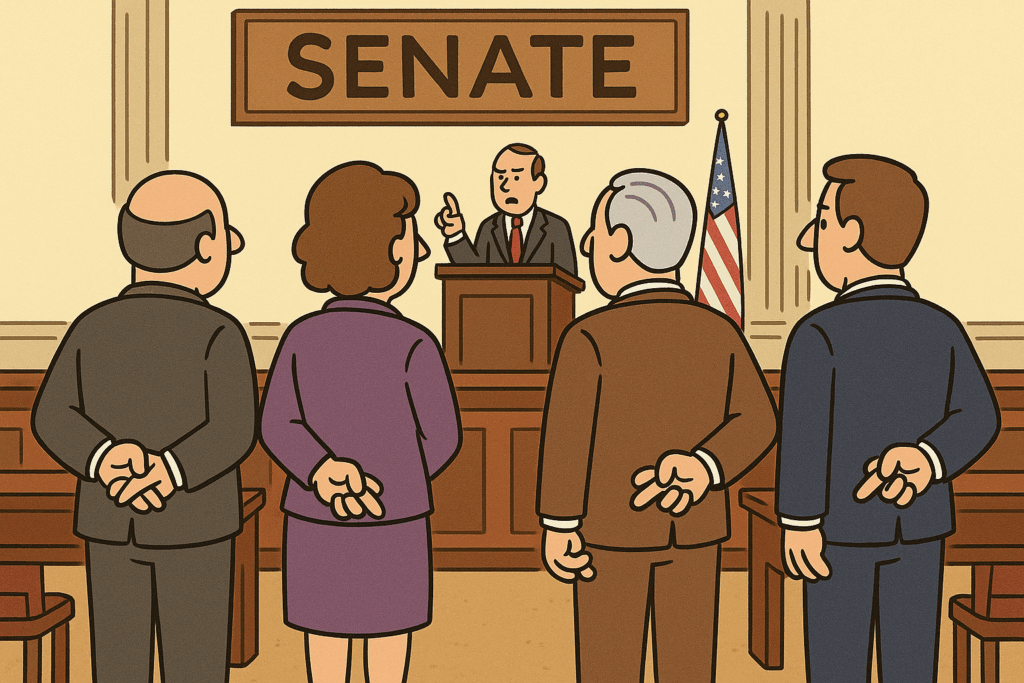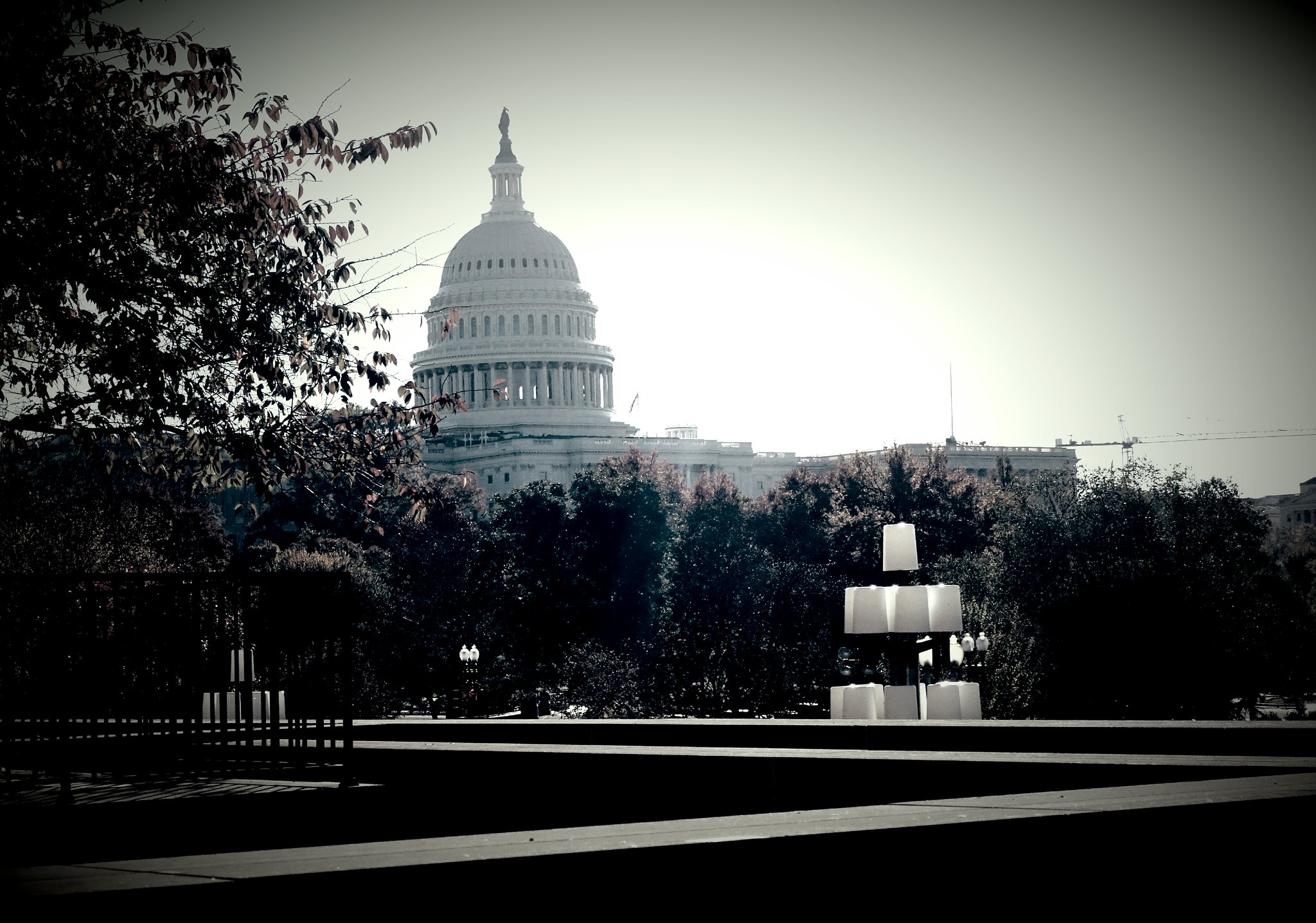The Senate Appropriations Committee has sent a strong response to Trump’s efforts to undermine worker safety: Go To Hell.
The bill approved last week by the Senate Appropriations Subcommittee on Labor Labor, Health and Human Services, and Education proposed to fully fund the budgets of OSHA, MSHA and NIOSH. (By “fully fund,” I mean funded at last year’s low levels.)
The subcommittee approved the bill by a vote of 26-3. As part of OSHA funding, the bill fully funds the Susan Harwood Worker Training Grant program which Republicans have attempted to eliminate for over 20 years. The report language accompanying the legislation also urges OSHA to “explore steps the agency can take to ensure that healthcare and social services workers are protected from violence in the workplace.” OSHA has been working on a workplace violence standard since 2016. (Report language is not legally binding, but describes the Senate’s intentions.)
Regarding NIOSH and the devastating destruction of the agency by DOGE, the report states that “The Committee recognizes that NIOSH is the only Federal agency responsible for conducting research and making recommendations for the prevention of work-related illness and injury” and “directs CDC to ensure work continues in NIOSH research centers nationwide.”
While no mention is made in the bill of OSHA’s progress on a workplace heat standard, the Report urges NIOSH to “research the relationship between heat stress and workplace illnesses and injuries and to identify means for more accurate data collection.”
The Section on MSHA curiously requires the agency to “fully and effectively enforce the Final Rule Reducing Miners’ Exposure to Coal Dust,” — a standard issued in 2014 — but fails to direct the full enforcement MSHA’s silica standard, which was issued by the Biden administration in 2024 and whose enforcement was “paused” for four months by the Trump administration. That 4-month enforcement “pause” is scheduled to end on August 18. We shall see….
In separate legislation, the Senate Appropriations Subcommittee on Interior, Environment, and Related Agencies voted to fully fund the Chemical Safety Board. The House Appropriations subcommittee has proposed to cut the CSB’s budget by “only” 40% — in contrast with the President’s proposal to completely eliminate the agency.
Congress Giveth and Congress Taketh Away
While these are very good signs, they are only the first steps of a long budget process. The bills still must be approved by the full Senate — either as separate bills, or as part of a comprehensive “omnibus” bill that combines multiple appropriations bills. Then they must be reconciled with the House versions — and finally signed by the President.
We still haven’t seen what the House of Representatives is proposing for the OSHA, MSHA or NIOSH budgets.
All of this has to be completed by September 30, or the government shuts down — unless the House, Senate and President agree on a “continuing resolution” which kicks the ball down the field for a few months. And given the acrimony between Republicans and Democrats and the fact that the Senate must have 60 votes to pass a budget bill, it is not unlikely that we will either see multiple continuing resolutions, or a government shutdown fought over issues much more prominent that worker safety.
The other shadow looming over this process is “rescission.” That’s where the Congress votes to “rescind” funding that it had previously approved in its appropriations bills. And while the appropriations bills must get 60 votes in the Senate, rescission bills only need 51 votes. We have already seen the passage of one rescission bill last month that cancelled $9 billion in funding previously passed by Congress and signed by President Trump. That bill rescinded $1.1 billion for the Corporation for Public Broadcasting and about $7 billion in foreign aid.
The prospect of a rescission bill affecting the FY 2026 budget throws a few monkey wrenches into the appropriations mechanism. First, it’s hard for anyone to rest easy with these budget “victories” if a Republican-controlled Congress can just change its mind the next day.
Second, Democrats are less willing to reach an agreement with Republicans on budget bills knowing that Republicans may agree to the FY 2026 budget with their fingers crossed behind their backs.
And even with no recission, we have seen how the President has refused to spend appropriated funds. This “impounding” of funding passed by Congress was supposedly made illegal by the Impoundment Control Act of 1974. But Republicans in Congress have been unwilling to challenge the President on this clear theft of their constitutional authority, and Trump’s Supreme Court has not stopped Trump’s illegal impoundment.
This whole process will be especially interesting at NIOSH where the President has eliminated most of the agency despite existing funding, while the Senate now proposes to continue funding the agency. If a final budget is signed with full NIOSH funding, will the eliminated NIOSH functions be restored, or will the President continue to ignore Congress and the legislation he signs?
These are strange, strange days.

What they are doing is B.S. but at least they’re will still be something going towards it. We can’t get away from these people fast enough, and hopefully elect the best people in that will take care of the people that vote them in..